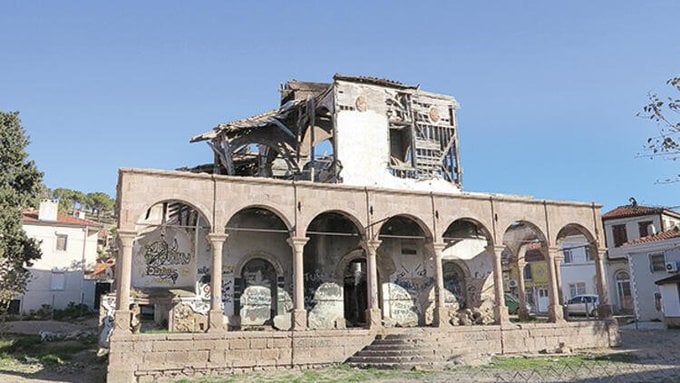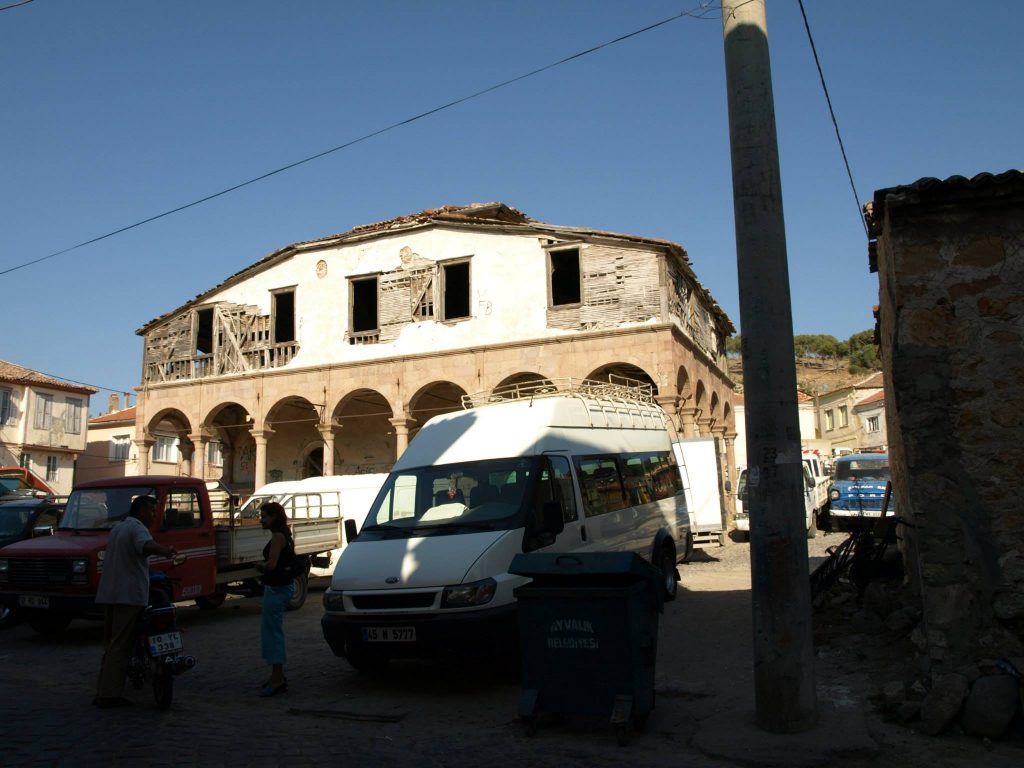
After being placed on a short list for conversion into a cultural center many years ago, the dilapidated Greek Orthodox Church of Hagia Triada, located in Ayvalik, Turkey, has now been approved for major renovations and an eventual reopening as a cultural museum.
After falling into ruin and even becoming a den for drug users, the once-beautiful church, built in 1846 by the region’s population of Greek Orthodox faithful, will have its underpinnings shored up and it will hopefully begin to take on some of its original grandeur once again.

Located in Turkey’s northwestern province of Balıkesir, the Ayvalik church’s renovation work has finally been approved by the country’s regional cultural and natural heritage preservation board after 16 years of falling through the cracks.
After the area was abandoned in 1923 when the resident Greek population was forced to relocate to Greece, the building, situated along the town’s Altınova Street, was used as a mosque. During those years, it was referred to by locals as “Biberli Cami,” which means “Peppery Mosque” in Turkish.
It was later made into a tobacco warehouse for the company TEKEL in 1953 and remained in that use for decades, until 2004.

Fallen Through the Bureaucratic Cracks
Its abandonment and decay only began to accelerate in that year, however, as it was assigned to Turkey’s Culture Ministry, whose officials asked the Ayvalik municipality to make it into a cultural center — and it somehow fell through the bureaucratic cracks.
The daily newspaper Hürriyet finally brought the issue of the building to the fore again last year, when it highlighted the concerns of local people, who had expressed alarm over the fact that it was being used by drug users and was falling into serious disrepair.
“The church turned into ruins in twelve years. It has become a house for glue-sniffers. This scares the locals,” wrote Hürriyet in a story published on Aug. 26, 2019.
After this negative publicity, the process for making the abandoned church a cultural center suddenly came to the attention of officials once again, and the restoration plan by Ömer Özyiğit and Tuğba Yetiş received official approval.
“In the 19th century, the Orthodox community constructed many churches in Ayvalık. The Greeks lived freely in the Ottoman times in the region. To show this fact, the church will be turned into a cultural center,” wrote Hürriyet in its Nov. 9 feature story about Hagia Triada.
The church was constructed in the form of a basilica, with three naves and a gallery floor above the narthex. Stone masonry and timber frame structure was used together in the building.
Some say that the columns contain thick cypress trunks as their main structure. The church’s outer walls and narthex are of stone while the roof and gallery floor were constructed with timber framing. The roof is carried by monolithic timber columns which divide the naves and it is covered by ornamented timber ceilings.
See all the latest news from Greece and the world at Greekreporter.com. Contact our newsroom to report an update or send your story, photos and videos. Follow GR on Google News and subscribe here to our daily email!



